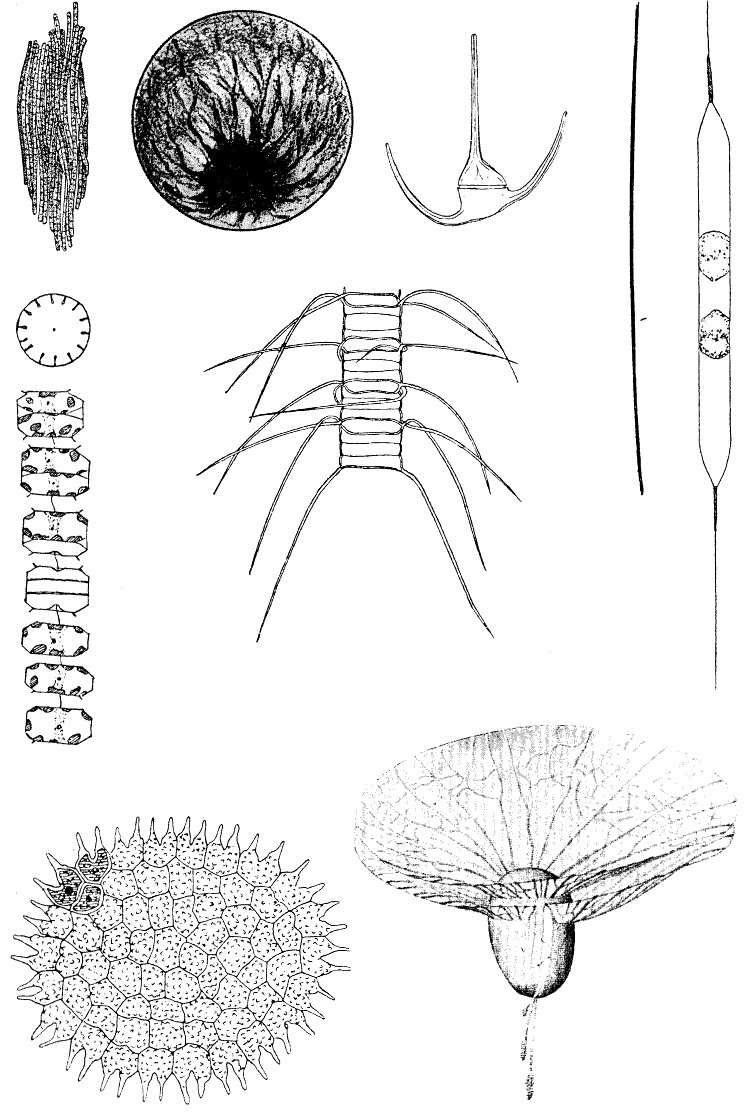PLANKTON
Plankton are minuscule animals or plants that float along with the tides and currents, they are known as "drifters" compared to
Nekton which are swimmers. Plankton comprise the bottom of the oceanic food web. There are two types of plankton: phytoplankton and zooplankton. Phytoplankton, pictured to the side, are critical for marine ecosystems because they produce their own food through
photosynthesis releasing oxygen as a byproduct which all the other marine organisms depend on. Zooplankton are important to the ecosystem because they transfer the energy from the phytoplankton that they eat to the larger organisms that prey on them.
 |
| Volvox w. m. stained purple with dye to view the cell's organelles. |
Volvox is a
genus of freshwater green globe algae belonging to the group zooplankton. It is a globe algae due to the circular shape formed by the cells. The cells, from 500 to 60,000, are interconnected by thin strands of
cytoplasm which allow for the cells to move together as one. The specimen we looked at during lab was stained with a dye to be able to see the cell's parts at 10 x 0.25 magnification. The dye makes the cell's parts more visible, each single cell within the colony has two
flagella that we can see on some of the cells along with
chloroplasts which allow the cells to photosynthesize along with a clear plasma membrane and the cytoplasm surrounding the cells.
 |
| Spirogyra specimen under a microscope. |
Spirogyra is a
filamentous fresh water green alga that contains spiral bands of chloroplasts. It is a plant cell, from the phytoplankton group, which is why the image is greener in nature. When looked at through the microscope at 10 x 0.25 magnification the spiral bands of chloroplasts are very clear. You can also clearly see a distinct cell wall, distinguishable to plant cells. Inside the cell is a large
vacuole where the
nucleus is suspended in cytoplasm.
 |
| A stentor moving around a slide. |
Stentors are
unicellular zooplankton that are a
genus of filter feeding heterotrophic ciliates. While it is a bad quality picture as the Stentor was moving around and small, you can still see the
macronucleus in the middle of its body. Using a higher magnification than 10x would have helped to better see it's organelles but since it was a live organism and kept moving the lower magnification was best to see to keep the specimen in the viewing field. It has small
cilia that it uses to direct food into its mouth and are one of the largest single celled organisms.
 |
| Vaucheria geminata at 4 x 0.10 magnification. |
Vaucheria geminata is a phytoplankton that can reproduce both sexually and asexually. The specimen that we viewed seems to be one that would reproduce sexually because you can see the male and female characteristics formed next to one another in the middle of the slide. They can reproduce asexually by the formation of
zoospores. Vaucheria are characterized by the
multinucleate tubular branches that lack cross walls. You can clearly see the cell wall and cytoplasm in the slide as well.





Comments
Post a Comment